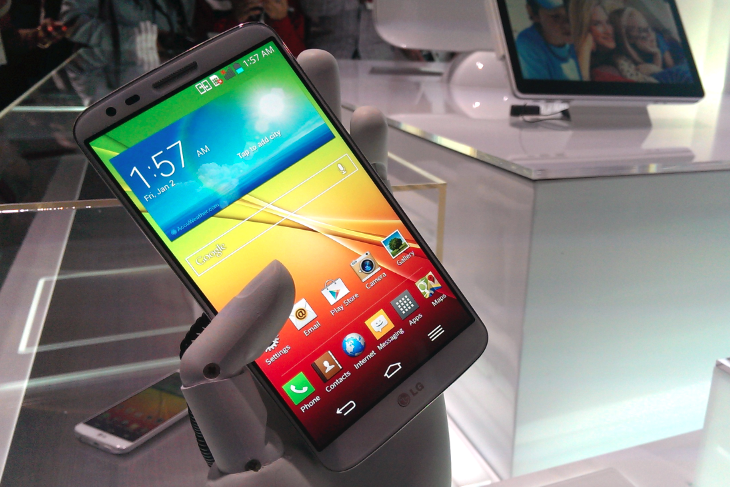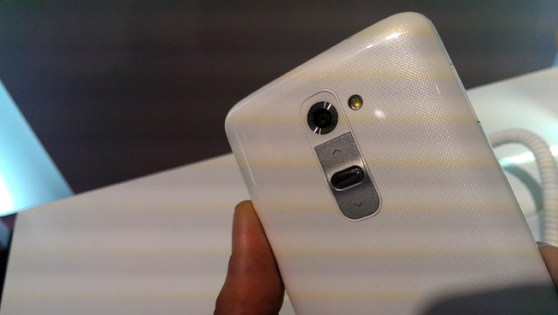NEW YORK CITY — You know the state of smartphone innovation is in bad shape when companies start making a big deal about where they put their phones’ volume buttons.
Such is the case with the G2, the new and largely unremarkable phone from LG. Unveiled at a press event today, the G2 is clearly LG’s answer to the Galaxy S IV, a phone whose presence is everywhere with the new hardware: Both devices have the same round edges and the same plastic feel, which means that if you don’t like Samsung’s phones, you probably won’t like the G2 all that much, either.
It’s not all bad, though. The most notable difference is that with the G2, LG has managed to almost completely erase the bezel around the phone’s 5.2-inch display, making it feel much larger than it actually is. No complaints there.
‘Learning from You’
LG says that the G2 is a product of its latest efforts to learn from how smartphone users actually interact with their devices. The primary results of that “research” are the G2’s new power and volume buttons, which are on its back side, directly under its camera.
LG’s argument is that because this is where people naturally rest their index fingers, it’s the ideal place to put physical hardware buttons. After using the device for a few minutes, I was only somewhat convinced. While the button placement makes sense on a purely intuitive level, smartphones have conditioned us expect hardware buttons on the sides of phones, not on their backs. As a result, what should be intuitive ends up being everything but.
Then again, maybe this is the kind of change that takes more than a few minutes to get used to.
A kitchen sink of software features
The LG G2 also features a somewhat overwhelming laundry list of software features, few of which most owners will end up using: One example is Slide Aside, a multitasking feature that switches between applications with a three-finger swipe (which means you won’t be able to use it with one hand).
Other features include Quick Memo (good for annotated screenshots), QSlide (for desktop-like multitasking), and Guest Mode (for keeping your kids out of certain apps).
What else?
Finding myself at a loss as to what to say about the G2, I challenged one of LG’s regional brand trainers with some basic questions: “What’s the primary selling point of this device? Why would anyone buy this over something like the Galaxy S IV?”
The resulting answer, predictably, boiled down to the same thing: the rear hardware keys. “Those are huge. I’ve always held my phone like this, and we finally have a phone that’s designed for that,” the LG trainer told me.
That response should probably tell you all you need to know about this device.



